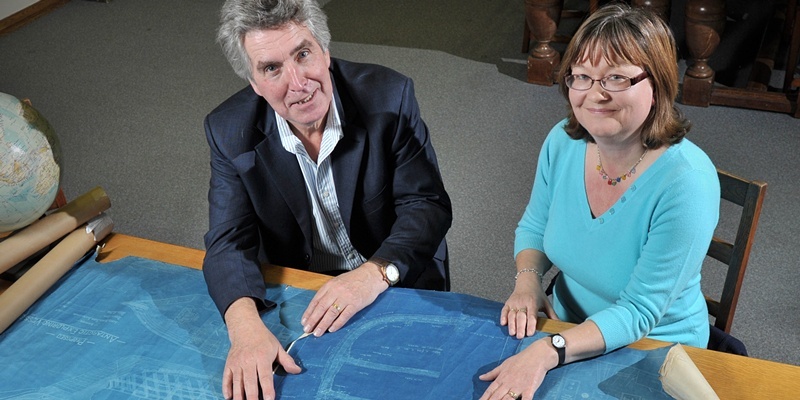A rare set of blueprints used over a century ago to build the RRS Discovery has turned up in East Yorkshire.
The fascinating documents had been kept in the home of student Jean Cannon, whose father worked at Goole Shipyard and rescued the blueprints in the 1980s.
After starting a course in regional and local history at the University of Hull, Jean took the set to her lecturer, maritime expert Dr Robb Robinson. She said: ”I am incredibly proud that my family have been the guardians of something of such historical importance.
”We always knew they were special but it is fascinating to know more about the links between Scott and the polar expeditions and this region.”
Dr Robinson has researched East Yorkshire’s role in polar exploration for many years, alongside wider research into maritime history. He said: ”I was amazed by these blueprints. They really are beautiful and may be one of the only, if not the only, set in existence.
”Certainly the experts I have spoken to have never seen any others. These are the blueprints which built the ship that launched the golden age of polar exploration.
”There is still a real appetite for anything related to Scott and the polar expeditions, with a host of films and television programmes in recent years.”
Next year marks the centenary of Scott’s fateful polar expedition, but the blueprints of his ship could have been lost forever if it hadn’t been for Jean’s father, Harry Smith.
During his long career at the shipyard as a draughtsman he collected the documents when they were sent from the sister shipyard in Dundee, which built the Discovery.
Recognising that the blueprints depicted something very special, he made sure he took them away with him for safekeeping when the Goole shipyard closed and many records were burned on a bonfire. Harry took the blueprints home and kept them in his attic at home in Goole. Following his death, they came to his daughter Jean.
She said: ”I inherited my love of history from my father and when my daughter Sophie came to the University of Hull to study, she suggested I try a course here. I only started this semester and after reading Dr Robinson’s book, which talks about Scott and his links with this area, I thought he might like to see the blueprints.”
Jean and her family are trying to decide what to do with the amazing documents in the long term, but there has been interest from Discovery Point.
Gill Poulter, heritage director at Discovery Point, confirmed it has expressed an interest and is waiting on ”tenterhooks” for a decision.
”We don’t have any original plans so obviously we are very excited by this development,” she said. ”It would be absolutely fantastic to have these blueprints on display here since we have the centre and the Discovery itself.”
The RRS Discovery was designed for Antarctic research and launched in 1901.
